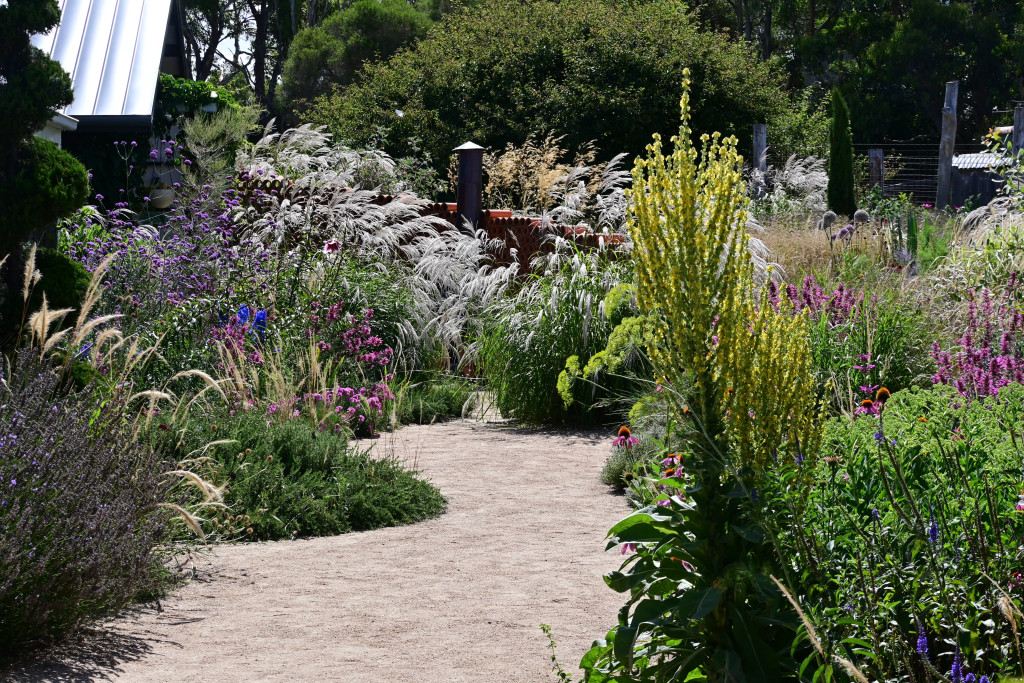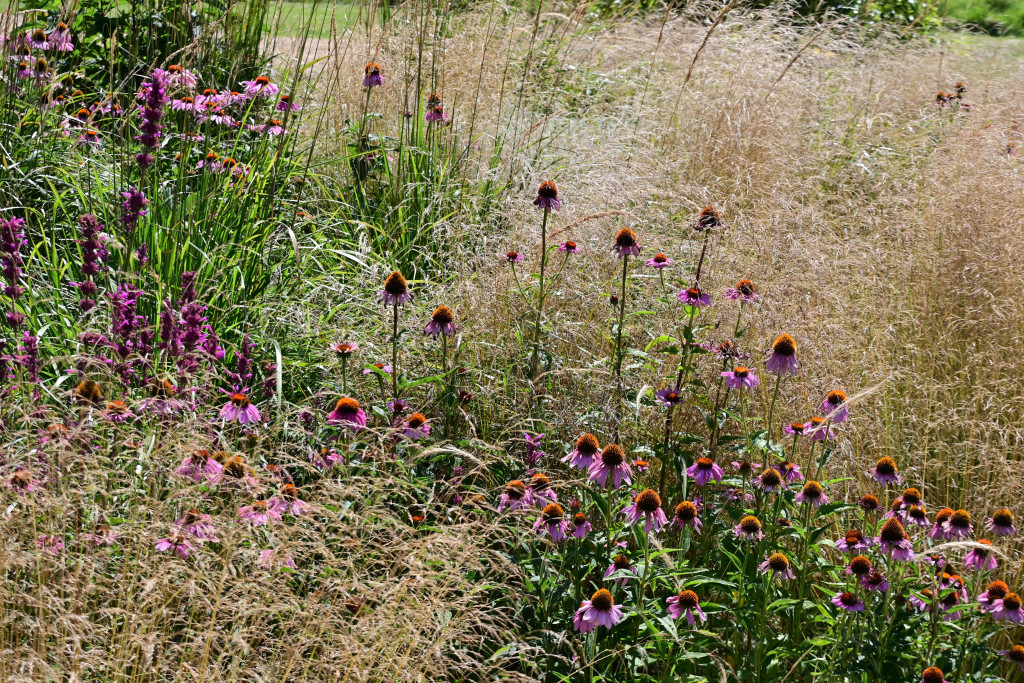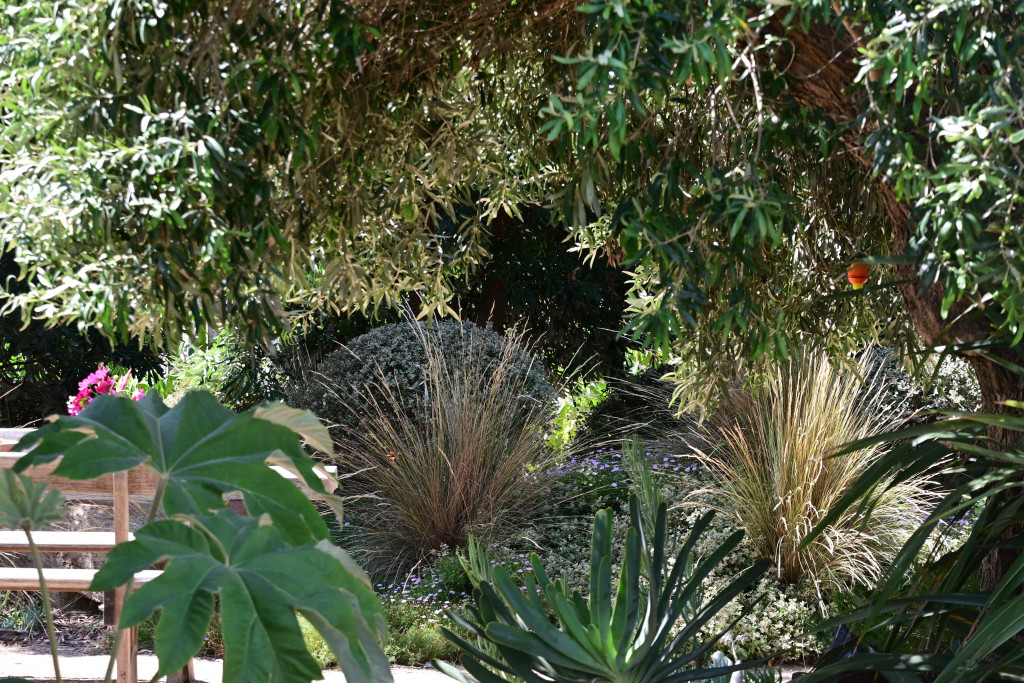If you’re an Instagrammer, the recent opening of the garden of Jo Ferguson and Simon Hazel won’t have escaped you. For a couple of days it felt like everyone was there, and in a fully understandable stupor of joy, were loading up their accounts with pics.
But as a TV host and commentator, I can’t see a good garden without trying to work out why it’s good – why it’s pressing my buttons. Let’s put that down to an analytical mind, and a habit I developed during the filming of Dream Gardens, when we decided that I wouldn’t see the ‘reveal’ garden until I was on camera, and that all of my reactions would be immediate, unplanned and unscripted. Man, I loved those ‘dangerous’ moments.

So what was so good about Jo and Simon’s garden? No doubt there’s magic there that’s beyond analysis, but here’s a few things I noticed.
There was a really magical balance between grasses, of many species, and of flowering perennials. If the grasses are underdone, the perennials can feel a bit blocky and stiff. Push them too far and the grasses suddenly become monotonous. The balance at Jo and Simon’s was just so perfectly right.

Related to that was the balance between highly dynamic, wind-catching forms and solid, crisp-edged shrubs. Nothing catches wind like the grasses, and on that day, the Miscanthus transmorrisonensis, peppered lightly throughout the garden, was at that perfect stage of volume and flexibility. At this early point of flowering, Miscanthus transmorrisonensis doesn’t catch wind like a flag or a windsock. It responds more like a partially pumped up inflatable – billowing, bulging and bending. And when viewed against the rock solid Strobilanthes gossypinus, for instance, ‘the size of a small car’ (to use Jo’s description), its fluidity is super-enhanced.

There was also, to my mind, a really good balance between the overall look of the garden and the detail. Some naturalistic gardens are so much about the overall effect that there’s no reward for looking further. Other gardens – and home gardeners are apt to make this mistake – are so full of different species that there’s no overall unity. Jo and Simon’s garden was rewarding on every level – standing right back, or zooming right in close. There were really rare and notable plants to find, but they all bowed to the bigger idea.

And lastly – this one’s tricky, I’m not sure if I’m capable of articulating this thought – this garden effortlessly walked a line between two usually mutually exclusive forms of appeal. It had all the visual cues of those gardens emerging in drier or harsher climates in which it feels perfectly valid to have little or no lawn, and to replace it with open areas and paths of gravel or sand, with no firm edge, allowing for planting to simply diffuse along the edges of paths, and for the paths to snake around endlessly, and turn back on themselves, as if the planting was there before the paths were put in. This style tends not to work in obviously verdant settings where, for instance, you’re surrounded by forest, of where you couldn’t for a minute believe that a mineral surface would not be instantly invaded by strong growth. But sitting alongside those dry- or pared-back-garden cues in this garden was well-fed, fully-hydrated planting. They were well fed thanks to Simon’s habit of mixing up serious mountains of compost (like, by the 100 cubic metre load) from grape Marc and manure, and fully hydrated due to a very generous rainfall. It’s a blend of the best of both worlds.

There’s so, so much more I could write, about the use of careful or creative use of natives, for instance, or of the remarkable simplicity of steely grey eucalypts against grey steel. But I think that’s enough gushing for now.





How beautiful. What are the grasses in the second and third to last photos? I use Native Austrostipa elegantissima – Elegant Spear Grass for a similar beautiful fluffy effect.
I wish we had more such analysis of gardens – but the pictures with the text demonstrate how hard it is to illustrate design points. Impossible perhaps to give the wider picture which we need. Still so much better than the usual overblown descriptions… Thanks!